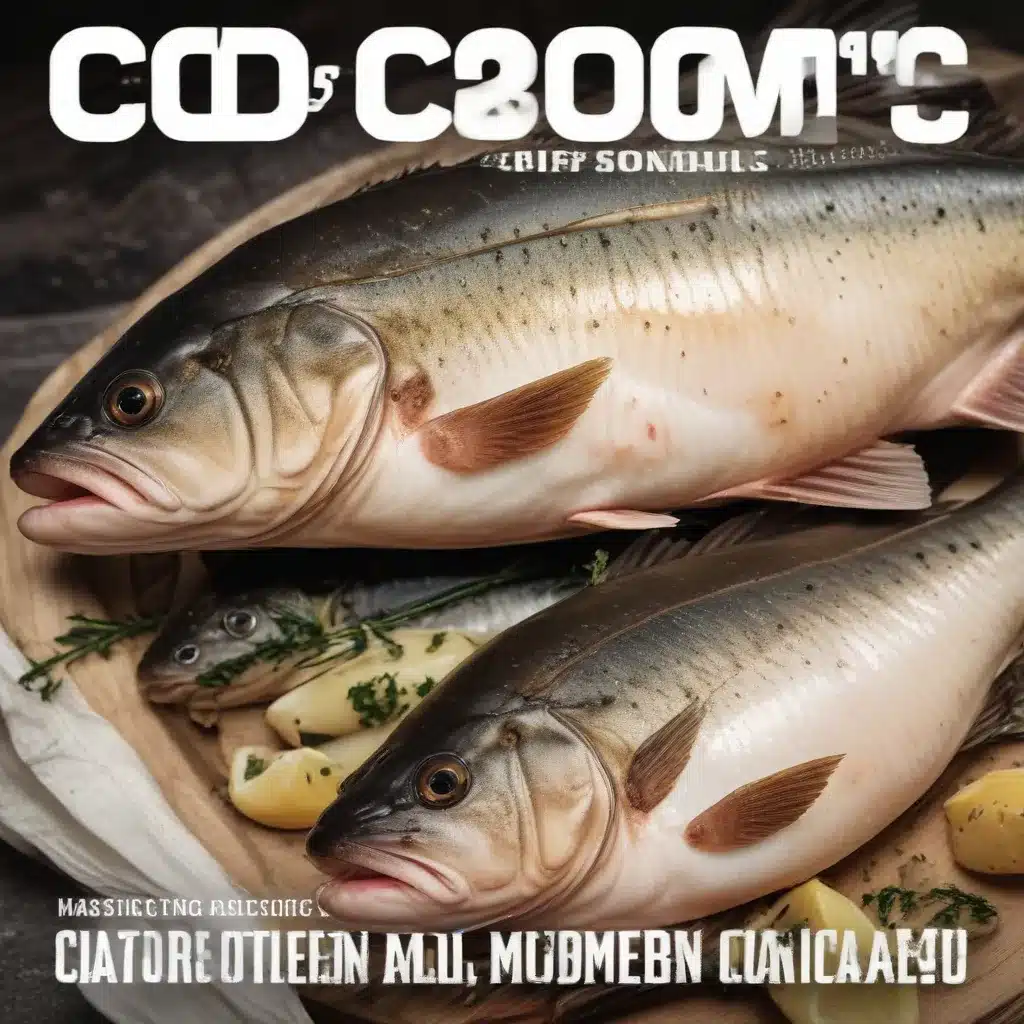
As a seafood dining expert writing for Fish Tales Cafe, I’m excited to share my comprehensive guide on the delightful and versatile cod fish. Known for its flaky texture, mild flavor, and myriad culinary applications, cod has long been a staple in kitchens around the world. Whether you’re a seasoned fish enthusiast or just starting to explore the wonders of the ocean’s bounty, this guide will empower you to select, store, and prepare cod with confidence.
The Essence of Cod
Understanding Cod as a Culinary Staple
Cod, a member of the Gadidae family, is one of the most widely consumed and beloved white fish. Hailing from the chilly waters of the North Atlantic and North Pacific, cod has been a dietary mainstay for coastal communities for centuries. Its popularity can be attributed to its firm, flaky texture, delicate flavor, and remarkable versatility in the kitchen.
Exploring the Varieties of Cod
While the term “cod” often conjures a singular image, there are actually several distinct varieties of this remarkable fish. The most well-known are the Atlantic cod, native to the waters off the northeastern United States and Canada, and the Pacific cod, found in the Pacific Ocean from Alaska to California. Other notable varieties include the Greenland cod, the European cod, and the Alaska pollock, which is sometimes marketed as “cod” due to its similar appearance and flavor profile.
The Nutritional Profile of Cod
Cod is not only a culinary delight but also a nutritional powerhouse. This lean, white fish is an excellent source of high-quality protein, with a 3.5-ounce serving providing a remarkable 15 to 20 grams of protein. Additionally, cod is rich in essential vitamins and minerals, including vitamin B12, vitamin B6, niacin, and selenium. Importantly, cod is also low in mercury, making it a safe and healthy choice for pregnant women, children, and health-conscious consumers.
Selecting the Perfect Cod
Evaluating Freshness
When selecting cod, the key to a successful culinary experience lies in identifying the freshest, highest-quality fish. Look for cod fillets or steaks that have a bright, translucent appearance, a firm and elastic texture, and a fresh, ocean-like aroma. Avoid any cod that appears discolored, has a slimy or dull surface, or emits a strong, unpleasant odor, as these are signs of deterioration.
Sourcing Sustainable Cod
In addition to freshness, it’s crucial to consider the sustainability of the cod you purchase. Look for cod that has been responsibly sourced from well-managed fisheries, prioritizing those that employ eco-friendly harvesting practices. Many organizations, such as the Marine Stewardship Council (MSC), provide certification to help consumers identify sustainable seafood options.
Identifying High-Quality Cod
While freshness and sustainability are essential, there are other factors to consider when selecting the best cod. Pay attention to the thickness and uniformity of the fillets or steaks, as this can impact cooking times and ensure even doneness. Additionally, look for cod with a bright white color and minimal discoloration, as this is a sign of superior quality.
Proper Cod Storage
Temperature and Humidity Control
Proper storage is key to preserving the freshness and quality of your cod. When storing fresh cod, it’s important to maintain a consistently cold temperature, ideally between 32°F and 40°F (0°C to 4°C). Ensure that the cod is kept in an airtight container or wrapped tightly in plastic to prevent drying and exposure to air.
Freezing and Thawing Techniques
For longer-term storage, cod can be frozen. When freezing cod, wrap the fillets or steaks tightly in plastic wrap or place them in a resealable freezer bag, removing as much air as possible. Frozen cod can be stored for up to 6 months, but be sure to thaw it slowly in the refrigerator rather than at room temperature to prevent bacterial growth.
Preventing Spoilage
To further extend the shelf life of your cod and prevent spoilage, consider employing techniques like brining or vacuum-sealing. Brining the cod in a saltwater solution can help retain moisture and improve texture, while vacuum-sealing can eliminate air exposure and slow down the oxidation process.
Preparing Cod Masterfully
Cleaning and Filleting Cod
Before cooking, you’ll need to prepare the cod by cleaning and filleting it, if necessary. Start by rinsing the cod under cold water, gently patting it dry with paper towels. If working with whole cod, carefully fillet the fish, removing the skin and any bones. This process ensures a clean, uniform cooking surface.
Marinades and Rubs for Flavor Enhancement
Cod’s mild flavor makes it an excellent canvas for a variety of marinades, rubs, and seasonings. Consider experimenting with zesty lemon-herb blends, warm spice mixes, or even bold Asian-inspired flavors to elevate the taste of your cod. Allowing the cod to marinate for at least 30 minutes can help infuse it with delicious layers of flavor.
Cooking Methods for Optimal Texture
When it comes to cooking cod, there are numerous techniques that can yield exceptional results. Baking, pan-frying, poaching, and grilling are all excellent options, each highlighting the cod’s flaky texture and delicate taste. For more adventurous home cooks, sous vide and en papillote (in parchment paper) cooking methods can also be employed to ensure perfectly cooked cod every time.
Whether you’re a seasoned seafood enthusiast or a newcomer to the world of cod, this comprehensive guide has provided you with the knowledge and tools to elevate your culinary experiences. By understanding the nuances of cod, sourcing the freshest and most sustainable options, and mastering the art of storage and preparation, you’re well on your way to becoming a true cod connoisseur. I invite you to visit https://www.fishtalescafe.com to explore more seafood-inspired recipes and culinary insights. Bon appétit!

